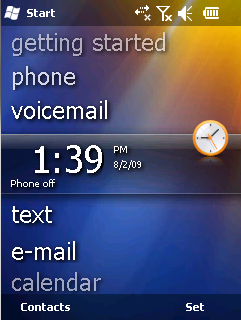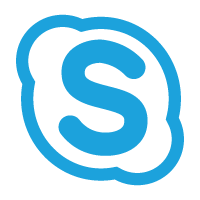
Microsoft Office, or simply Office, is a family of client software, server software, and services developed by Microsoft. It was first announced by Bill Gates on August 1, 1988, at COMDEX in Las Vegas. Initially a marketing term for an office suite, the first version of Office contained Microsoft Word, Microsoft Excel, and Microsoft PowerPoint. Over the years, Office applications have grown substantially closer with shared features such as a common spell checker, OLE data integration and Visual Basic for Applications scripting language. Microsoft also positions Office as a development platform for line-of-business software under the Office Business Applications brand. On July 10, 2012, Softpedia reported that Office was being used by over a billion people worldwide.
A computing platform or digital platform is the environment in which a piece of software is executed. It may be the hardware or the operating system (OS), even a web browser and associated application programming interfaces, or other underlying software, as long as the program code is executed with it. Computing platforms have different abstraction levels, including a computer architecture, an OS, or runtime libraries. A computing platform is the stage on which computer programs can run.

MSN is a web portal and related collection of Internet services and apps for Windows and mobile devices, provided by Microsoft and launched on August 24, 1995, the same release date as Windows 95.

Windows Mobile is a discontinued family of mobile operating systems developed by Microsoft for smartphones and Pocket PCs.

Skype for Business is enterprise instant messaging software developed by Microsoft as part of the Microsoft Office suite. It is designed for use with the on-premises Skype for Business Server software, and a software as a service version offered as part of Office 365. It supports text, audio, and video chat, and integrates with Microsoft Office components such as Exchange and SharePoint.

Windows Marketplace was a Microsoft platform for the delivery of software electronically that was secured by use of Windows Live ID. The digital locker platform was composed of four major components:
- Windows Marketplace catalog
- Multi merchant download cart
- Digital Locker Assistant
- Digital Locker

Windows Live is a discontinued brand-name for a set of web services and software products from Microsoft as part of its software plus services platform. Chief components under the brand name included web services, several computer programs that interact with the services, and specialized web services for mobile devices.

Windows SideShow is a technology developed by Microsoft and introduced in the Windows Vista operating system that is designed to provide information such as the number of unread e-mail messages or RSS feeds on a secondary display of a Windows-based device; displays may be integrated as part of a device itself or included as part of a separate component connected to a personal computer. SideShow integrates with the Windows Gadgets feature of Windows Vista and Windows 7 and can also integrate with applications such as Windows Media Center.
Mobile app development is the act or process by which a mobile app is developed for mobile devices, such as personal digital assistants, enterprise digital assistants or mobile phones. These applications can be pre-installed on phones during manufacturing platforms, or delivered as web applications using server-side or client-side processing to provide an "application-like" experience within a Web browser. Application software developers also must consider a long array of screen sizes, hardware specifications, and configurations because of intense competition in mobile software and changes within each of the platforms. Mobile app development has been steadily growing, in revenues and jobs created. A 2013 analyst report estimates there are 529,000 direct app economy jobs within the EU then 28 members, 60 percent of which are mobile app developers.
Microsoft engineering groups are the operating divisions of Microsoft. Starting in April 2002, Microsoft organised itself into seven groups, each an independent financial entity. In September 2005, Microsoft announced a reorganization of its then seven groups into three. In July 2013, Microsoft announced another reorganization into five engineering groups and six corporate affairs groups. A year later, in June 2015, Microsoft reformed into three engineering groups. In September 2016, a new group was created to focus on artificial intelligence and research. On March 29, 2018 a new structure merged all of these into three.
Live Anywhere is an initiative by Microsoft to bring the Xbox Live online networking service to a wide variety of platforms and devices including Xbox, Xbox 360, Microsoft Windows, Windows Phone, Zune, and more.

Windows Phone (WP) is a discontinued family of mobile operating systems developed by Microsoft for smartphones as the replacement successor to Windows Mobile and Zune. Windows Phone featured a new user interface derived from Metro design language. Unlike Windows Mobile, it was primarily aimed at the consumer market rather than the enterprise market.
Microsoft Azure is a cloud computing service created by Microsoft for building, testing, deploying, and managing applications and services through Microsoft-managed data centers. It provides software as a service (SaaS), platform as a service (PaaS) and infrastructure as a service (IaaS) and supports many different programming languages, tools, and frameworks, including both Microsoft-specific and third-party software and systems.

Windows Marketplace for Mobile was a service by Microsoft for its Windows Mobile platform that allowed users to browse and download applications that had been developed by third parties. The service was available for use directly on Windows Mobile 6.x devices and on personal computers. It was announced at the 2009 Mobile World Congress, and began operation on 6 October 2009, featuring an initial 246 applications. Initially it was available only for Windows Mobile 6.5, and was made available to older 6.x versions a few weeks later. On February 15, 2010 Microsoft announced its next generation mobile platform named Windows Phone; there is a separate app store, Windows Phone Store, for it; WM6.x apps are not compatible with WP7.

Office 365 is a line of subscription services offered by Microsoft as part of the Microsoft Office product line. The brand encompasses plans that allow use of the Microsoft Office software suite over the life of the subscription, as well as cloud-based software as a service products for business environments, such as hosted Exchange Server, Skype for Business Server, and SharePoint, among others. All Office 365 plans include automatic updates to their respective software at no additional charge, as opposed to conventional licenses for these programs—where new versions require purchase of a new license.

Sticky Notes is a desktop notes application included in Windows 7, Windows 8, and Windows 10. It was present in Windows Vista as a gadget for the Windows Sidebar, and originated in Windows XP Tablet Edition in 2002. The program allows users to take notes using post-it note–like windows on their desktop. According to a Microsoft employee, there were eight million monthly Sticky Notes users as of April 2016.
Microsoft Mobile Services are a set of proprietary mobile services created specifically for mobile devices, they are typically offered through mobile applications and mobile browser for Windows Phone, Android, iOS, BlackBerry, Nokia platforms, BREW, and Java ME. Microsoft's mobile services are typically connected with a Microsoft account and often come preinstalled on Microsoft's own mobile operating systems while they are offered via various means for other platforms. Microsoft started to develop for mobile computing platforms with the launch of Windows CE in 1996 and later added Microsoft's Pocket Office suite to their Handheld PC line of PDAs in April 2000. From December 2014 to June 2015, Microsoft made a number of corporate acquisitions, buying several of the top applications listed in Google Play and the App Store including Acompli, Sunrise Calendar, Datazen, Wunderlist, Echo Notification Lockscreen, and MileIQ.
Microsoft Pay is a mobile payment and digital wallet service by Microsoft that lets users make payments and store loyalty cards on certain devices. Making payments is currently supported on the Microsoft Edge browser. Microsoft Pay does not require Microsoft Pay-specific contactless payment terminals, and can work with existing contactless terminals if used on mobile devices. Similar to Android Pay, Microsoft Pay utilizes Host card emulation (HCE) for making in-store payments.

Windows 10 Mobile is a discontinued mobile operating system developed by Microsoft. First released in 2015, it is a successor to Windows Phone 8.1, but was marketed by Microsoft as being an edition of its PC operating system Windows 10.
Universal Windows Platform (UWP) is an Computing platform created by Microsoft and first introduced in Windows 10. The purpose of this platform is to help develop universal apps that run on Windows 10, Windows 10 Mobile, Xbox One and HoloLens without the need to be re-written for each. It supports Windows app development using C++, C#, VB.NET, and XAML. The API is implemented in C++, and supported in C++, VB.NET, C#, F# and JavaScript. Designed as an extension to the Windows Runtime platform first introduced in Windows Server 2012 and Windows 8, UWP allows developers to create apps that will potentially run on multiple types of devices.







